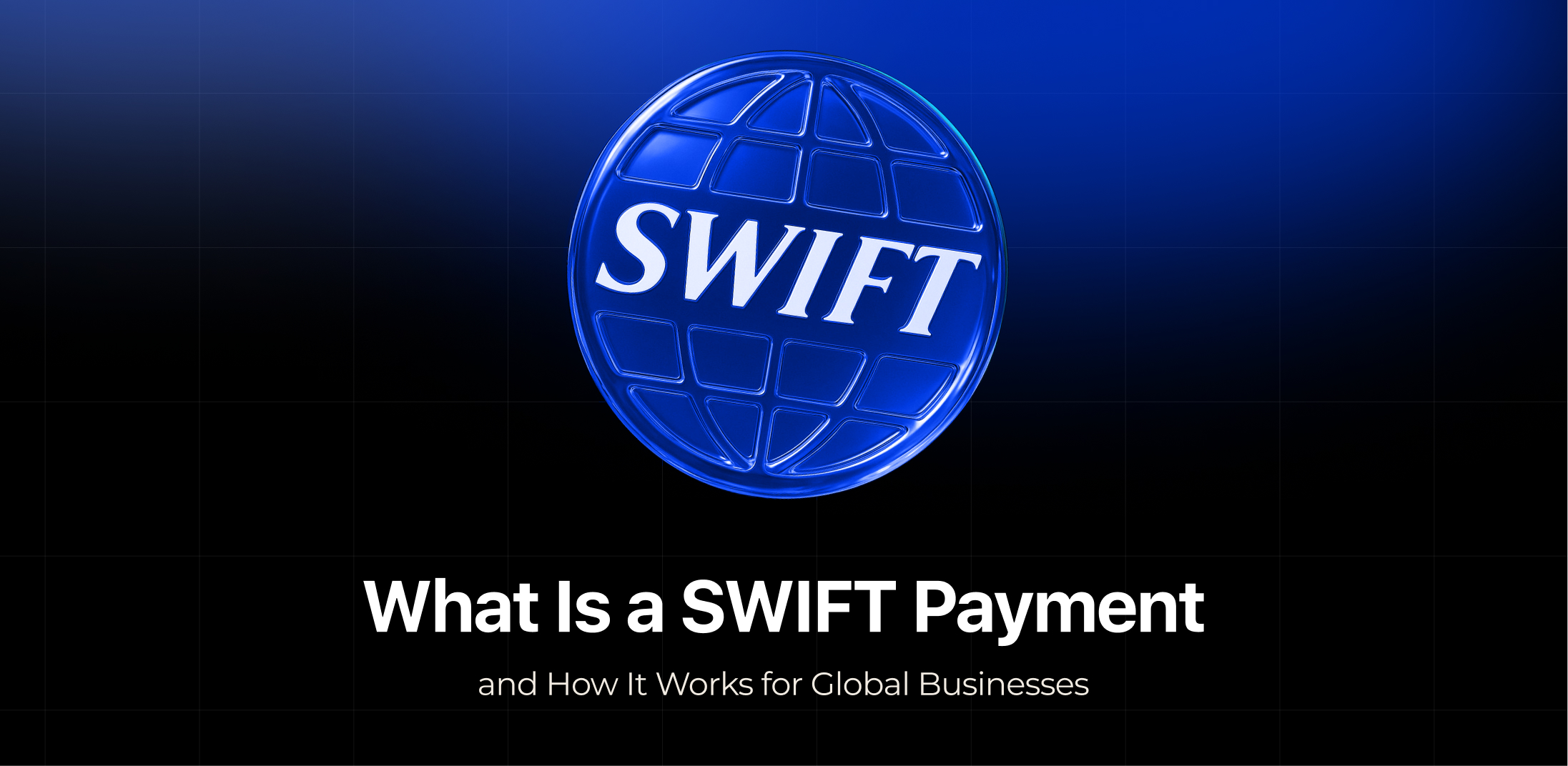Businesses frequently engage in cross-border transactions, making secure and efficient payment solutions a necessity. One of the most trusted systems for international money transfers is SWIFT payment. But what is a SWIFT payment, and why do companies depend on it for global financial operations?
The SWIFT (Society for Worldwide Interbank Financial Telecommunication) network serves as a crucial infrastructure for financial messaging, allowing banks and financial institutions to exchange payment instructions securely. While SWIFT does not directly move funds, it enables smooth and accurate communication between institutions to facilitate international transactions.
Companies worldwide rely on a SWIFT business payment for several reasons:
- Security: SWIFT incorporates advanced encryption and compliance measures to safeguard transactions against fraud and cyber threats.
- Extensive Network: With connections to over 11,000 financial institutions in more than 200 countries, SWIFT provides businesses with a seamless way to send and receive payments across borders.
- Standardized Process: The network ensures consistency and clarity in financial messaging, reducing errors and inefficiencies.
For businesses involved in international trade, supplier payments, and cross-border investments, understanding SWIFT is essential. Leveraging this system effectively can help optimize payment processes, minimize transaction delays, and improve cash flow management. In the sections ahead, we’ll delve into the mechanics of SWIFT payments, their advantages and limitations, and how businesses can use them strategically for global transactions.
Understanding SWIFT Payments
The Society for Worldwide Interbank Financial Telecommunication (SWIFT) is a global messaging network that enables financial institutions to exchange payment instructions securely. Established in 1973, SWIFT has become the backbone of international banking, allowing businesses and individuals to send money with SWIFT across borders with standardized and encrypted messages.
How SWIFT Works: A Secure Messaging System
Unlike traditional payment networks that transfer funds directly, SWIFT functions as a communication platform for banks. When a company or individual initiates an international payment, SWIFT sends a secure message containing the transaction details to the recipient’s bank. The actual movement of money is handled by correspondent banks, but SWIFT ensures that the payment instructions are delivered accurately and securely.
SWIFT vs. Other Payment Systems
- SWIFT vs. SEPA
SEPA (Single Euro Payments Area) is a regional system designed for fast and cost-effective euro transactions within Europe. SWIFT, in contrast, operates globally and supports multiple currencies, making it ideal for cross-border transactions outside the EU.
- SWIFT vs. Wire Transfers
Wire transfers refer to the actual movement of funds between banks, often processed through networks like SWIFT or domestic payment systems. SWIFT facilitates the communication necessary for wire transfers but does not handle the transfer of funds itself.
- SWIFT vs. Cryptocurrency Transactions
Cryptocurrencies enable instant, decentralized transactions without intermediaries, offering lower fees and faster processing times. SWIFT, however, is regulated and widely accepted, making it the preferred choice for businesses requiring compliance and security.
For companies engaged in international trade, understanding SWIFT payments is essential for optimizing global transactions. By leveraging SWIFT, businesses can ensure secure, standardized, and efficient cross-border payments while navigating various financial systems effectively.
How SWIFT Works: The Payment Process

SWIFT payments are widely used for cross-border transactions, providing a standardized and secure way for businesses to transfer funds internationally. While SWIFT does not move money directly, it facilitates communication between financial institutions, ensuring that payments are processed correctly. Here’s a step-by-step breakdown of how a SWIFT transaction works.
1. Payment Initiation
The process begins when a business or individual requests a payment through their bank. This request includes details such as:
- The recipient’s name and banking details;
- The amount and currency of the transfer;
The recipient’s SWIFT code and IBAN (International Bank Account Number).
2. Message Transmission via SWIFT Network
Once the payment is initiated, the sender’s bank uses the SWIFT network to send a secure, encrypted message to the recipient’s bank. This message contains the transaction details and ensures that all parties involved have the correct instructions for processing the payment.
3. Role of Intermediary Banks
If the sender’s and recipient’s banks do not have a direct relationship, intermediary (correspondent) banks help facilitate the transaction. These banks act as middlemen, forwarding the payment message along the correct financial channels.
- Additional intermediary banks may be involved, increasing costs and processing time.
- Each intermediary bank may charge a fee, affecting the total amount received.
4. Receiving Bank Processes Payment
Once the message reaches the recipient’s bank, they verify the details, convert the currency (if needed), and deposit the funds into the recipient’s account. The recipient’s bank may also perform compliance checks before finalizing the transaction.
The Role of SWIFT Codes and IBANs
- SWIFT Code: A unique identifier for financial institutions, ensuring that funds are sent to the correct bank.
- IBAN: A standardized international bank account number used in many countries to ensure accuracy in processing transactions.
How Long Does a SWIFT Payment Take?
A SWIFT transaction typically takes 1 to 5 business days, depending on factors like:
- The number of intermediary banks involved;
- Banking hours and time zones;
- Compliance and anti-money laundering (AML) checks.
While SWIFT payments are secure and widely accepted, businesses should be aware of potential delays and fees associated with intermediary banks. Understanding this process helps companies optimize international payments and manage financial operations more effectively.
Benefits of Using SWIFT for Global Businesses

The SWIFT (Society for Worldwide Interbank Financial Telecommunication) network is a cornerstone of international finance, offering businesses a secure and efficient way to conduct cross-border transactions. One of its primary advantages is security and reliability. SWIFT employs standardized and encrypted messaging protocols, ensuring that payment instructions are transmitted securely between financial institutions. This reduces the risk of fraud, cyber threats, and errors, making it a trusted system for global enterprises handling sensitive financial data.
Another significant benefit of SWIFT is its unmatched global reach. The network connects over 11,000 financial institutions in more than 200 countries, allowing businesses to transact seamlessly across borders. Whether dealing with suppliers, clients, or partners, companies can rely on SWIFT to facilitate international payments with consistency and accuracy, eliminating the need for multiple intermediaries and reducing potential delays.
For businesses requiring transparency in their transactions, SWIFT provides real-time tracking capabilities. With services like SWIFT gpi (Global Payments Innovation), businesses can monitor the status of their payments in real-time, knowing exactly when a transfer is initiated, processed, and received by the beneficiary. This enhanced visibility improves cash flow management and reduces uncertainties in financial operations.
Finally, SWIFT supports multi-currency transactions, making it an ideal solution for companies operating in various markets. Whether sending payments in USD, EUR, GBP, or any other fiat currency, businesses can conduct transactions efficiently without the need for multiple banking relationships. This flexibility simplifies global trade, allowing companies to focus on growth rather than navigating complex financial systems. By combining security, global accessibility, real-time tracking, and multi-currency support, SWIFT remains an essential tool for businesses seeking seamless and secure international payments.
Challenges and Costs of SWIFT Payments
While SWIFT remains a trusted and widely adopted system for conducting international payments, companies operating on a global scale should also be mindful of the potential drawbacks and financial implications associated with its use.
Accumulated Fees and Additional Costs
A major consideration for businesses using SWIFT is the layered fee structure. Each transaction may incur charges from the initiating bank, the receiving institution, and several intermediary or correspondent banks. They can handle the transfer along the way. These cumulative fees can add up quickly and are often unpredictable, particularly for transfers involving exotic currencies or less common banking corridors.
Extended Processing Times
Despite SWIFT’s global presence, the system is not designed for real-time transfers. Payments can take anywhere from one to five business days to reach their destination, depending on the number of financial institutions involved. Every step in the chain may include manual checks or temporary holds, and delays are further compounded by differences in operating hours, local banking holidays, or time zone gaps. For businesses requiring fast payment execution, this can pose operational challenges.
Currency Exchange Rates and Hidden Losses
When dealing with payments across different fiat currencies, financial institutions often apply their own exchange rate margins, which may not reflect competitive market rates. These built-in markups on foreign currency conversions can lead to substantial hidden losses, especially for organizations that regularly transact in multiple currencies or handle high-value transfers.
Regulatory Requirements and Processing Hurdles
All SWIFT transfers are subject to international compliance protocols such as KYC (Know Your Customer) and AML (Anti-Money Laundering). While these safeguards protect the financial ecosystem, they can also introduce bureaucratic slowdowns. Transactions may be delayed or even declined if additional verification is needed or if irregularities are flagged during screening.
Alternatives to SWIFT Payments
As international trade continues to advance, a growing number of companies are turning to modern alternatives to the legacy SWIFT system. Although SWIFT still plays a vital role in global finance, emerging payment technologies now offer faster processing times, reduced costs, and enhanced visibility, making them an appealing choice for cross-border transactions.
SEPA: Fast and Cost-Effective Transfers in the Eurozone
Businesses operating across the European Union can benefit from the Single Euro Payments Area (SEPA) as an efficient replacement for SWIFT when handling euro payments. SEPA allows for quick and seamless euro transfers between participating EU countries. It is often finalized within a single working day or instantly via SEPA Instant.
One of its biggest advantages is that it usually comes with minimal or no transaction fees, making it a smart solution for organizations handling frequent euro payments. While SEPA is limited to eurozone transactions, it excels in speed, simplicity, and cost-effectiveness within this area.
Cryptocurrencies and Stablecoins
The adoption of blockchain-based solutions, especially stablecoin such as USDC, is rapidly gaining momentum as a cross-border payment method. Pegged to traditional currencies, these digital assets reduce volatility and support real-time global transactions.
Thanks to low fees and 24/7 availability, businesses can bypass traditional banking bottlenecks and intermediaries. A transaction in USDT via blockchains like Tron or Ethereum can be completed in mere seconds—ideal for high-frequency or urgent international payments, particularly in developing markets.
Fintech Alternatives for Global Operations
Innovative platforms like PaySaxas, Wise, and Revolut have emerged as practical, modern tools for conducting international transactions. These services offer features such as multi-currency accounts, competitive exchange rates, and clear pricing, making them a streamlined alternative to the complexity of traditional banking. PaySaxas, for example, supports both fiat and cryptocurrency payments, delivering a fast, compliant, and secure experience tailored for global commerce.
Companies today can leverage more agile, transparent, and cost-saving solutions that outperform SWIFT in many scenarios—helping them thrive in a dynamic and interconnected marketplace.
How PaySaxas Helps Businesses Optimize SWIFT Payments

Although SWIFT continues to be a cornerstone for international financial transactions, businesses often face hurdles such as elevated fees, processing lags, and FX-related losses. PaySaxas offers a modernized solution to these challenges, enhancing the traditional SWIFT experience through smart financial tools and global banking infrastructure.
Access to Favorable FX Rates
Currency exchange can significantly influence the total cost of cross-border payments. PaySaxas gives businesses access to favorable and transparent foreign exchange rates, helping to minimize conversion costs. This feature is especially valuable for companies dealing in multiple currencies, where small percentage improvements can result in significant savings.
Reduced Transaction Fees
A standout benefit of working with PaySaxas is the lowering of fees commonly tied to SWIFT transactions. By intelligently routing transfers and utilizing established relationships with leading financial institutions, PaySaxas significantly cuts down on intermediary and processing costs, ensuring a more efficient flow of funds.
Faster Payment Execution
Cross-border delays can be frustrating and costly. PaySaxas shortens settlement times by leveraging its network of direct banking partnerships and optimized payment paths. Fewer middlemen mean faster delivery, smoother processing, and fewer unexpected slowdowns.
Streamlined Multi-Currency Accounts
Managing several banks for different currencies can be complex and time-consuming. PaySaxas simplifies this with multi-currency business accounts, allowing enterprises to send and receive payments in a variety of fiat currencies through a single, unified platform. This supports operational agility and enhances global cash management.
Seamless Crypto-Fiat Integration
In today’s hybrid financial world, adaptability is essential. PaySaxas empowers businesses to operate fluidly across fiat and digital currencies, including stablecoins like USDC. This dual capability provides added flexibility, faster settlements, and expanded global reach. With PaySaxas, businesses can elevate their SWIFT payment processes, gaining speed, reducing costs, and unlocking broader financial possibilities.
Conclusion
SWIFT remains a cornerstone of global financial infrastructure, offering a secure and standardized system for cross-border payments. Yet, businesses frequently encounter hurdles such as elevated fees, slow settlement times, complex regulatory checks, and suboptimal foreign exchange rates. To overcome these challenges, selecting the right payment partner is critical.
PaySaxas stands out as a modern solution, redefining the SWIFT payment experience through a combination of competitive FX pricing, reduced intermediary costs, and faster processing enabled by strategic banking connections. Its multi-currency business accounts simplify global operations, while seamless crypto integration allows companies to shift between fiat and digital currencies with ease.
For internationally active businesses, PaySaxas delivers greater efficiency and flexibility in handling global transactions. Whether facilitating euro transfers via SWIFT or enabling real-time payments in stablecoins like USDC, PaySaxas equips companies with the tools to operate effectively in both traditional and digital financial environments. In a rapidly evolving global marketplace, a future-ready partner like PaySaxas can be the key to unlocking smarter, smoother payment operations.








